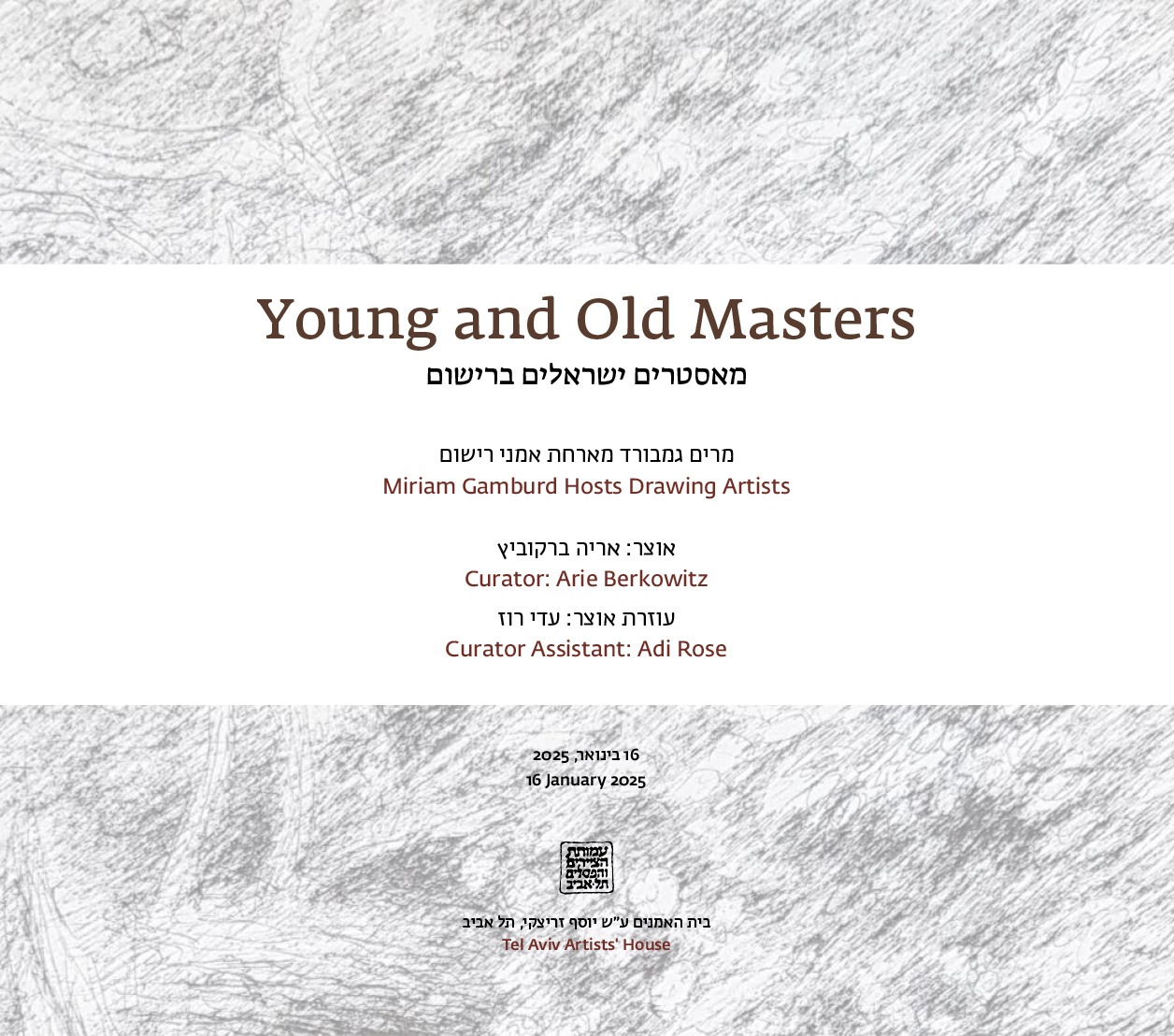Miriam Gamburd Hosts Drawing Artists
Oswald Adler | Sasha Okun | Moisey Gamburd | Miriam Gamburd | Ilya Gefter | Tsuki Garbian | Osias Hoffstatter | Joseph Hirsch | Jonathan Hirchfeld | Eran Webber | Edan Weiss | Lena Zaidel | Maya Zack | Ran Tenenbaum | Artur Yakobov | Ofer Lelouche | Yossi Mark | Itamar Newman | Noam Omer | Rani Pardes | Yair Perez | Sigal Tsabari | Hava Raucher | Rauchwerger Jan | Assaf Rahat | Harold Rubin | Shir Shvadron
The history of Israeli drawing is long and marked by ups and downs
Arie Bercowitz, Chief Curator
This exhibition was conceived by Miriam Gamburd, a lifelong artist deeply dedicated to the art of drawing in Israel. As she puts it, “For 40 years, I have been harnessed to the wagon – or rather, the carriage – of Israeli drawing.”
This is the second group drawing exhibition that Gamburd has organized at the Artists’ House, following “The Draftsman,” in 2021, that showcased works by her former students, many of whom have since become her colleagues.
The current exhibition, “Young and Old Masters,” brings together works by contemporary drawing artists alongside prominent figures from earlier generations including Oswald Adler, Moisey Gamburd, Osias Hofstetter, Joseph Hirsch and Harold Rubin.
Drawing, Impression, Reshimo
Miriam Gamburd
The fragile medium of drawing has not only survived but has been
empowered in response to conceptual experimentation. It is time to
discuss and philosophize about the very nature of drawing.
In this enchanted chain of words, the term “Reshimo” is borrowed from the Kabbalistic lexicon. Its meaning is “a trace of divine presence” – a remnant, or a lingering scent. After the contraction of the Infinite Light there remained a boundary between the previous and the new state, the impression of what was before. Infinite light became a point of light. Thus, a new boundary was formed marking a new situation: the line, the light and shadow – chiaroscuro, an Italian word from academic drawing. In drawing, light and darkness are mixed; is drawing itself a trace of divine presence on the page?
Eye, Sin, Art
Training the eye of the drawer is one of the most essential tasks in the teaching of drawing. An artist blessed with a keen visual sense must develop the ability to “think with their eyes” since this craft belongs to the realm of visual art (vision). In rabbinic literature (Chazal), vision is considered the most misleading of the senses, as noted in Numbers 15:39. The Midrash (Bamidbar Rabbah 10:2) expands on this, stating that “the eye and the heart are the two pimps of sin.” The words ‘sin’ and ‘eye’ are placed next to each other. The Talmud adds to this (Sotah 8a): “The evil inclination has no power except over what the eyes see.” The Talmud also contains striking stories about both physical blindness and self-imposed blindness.
